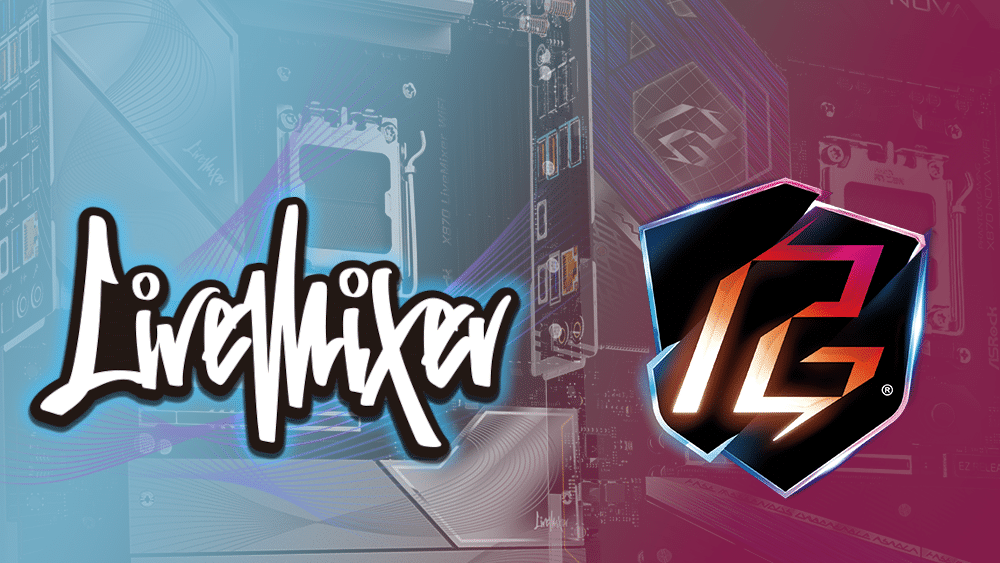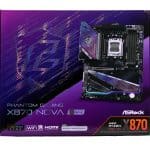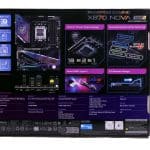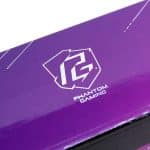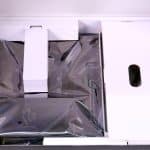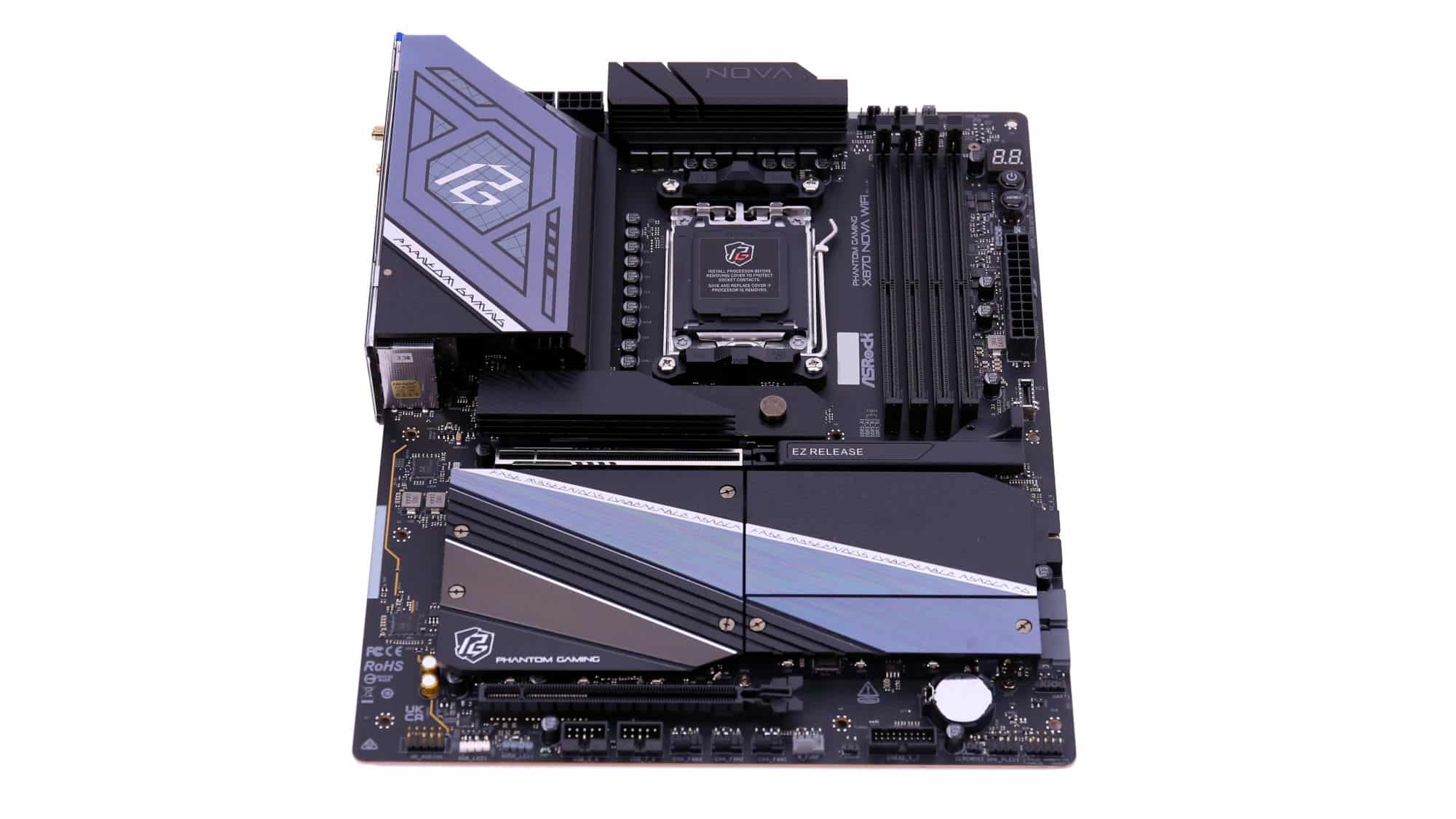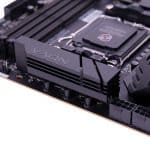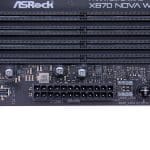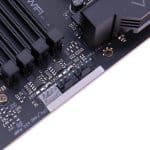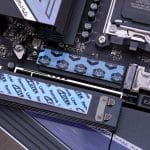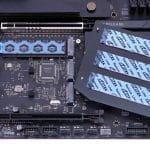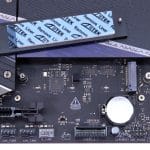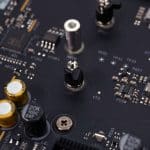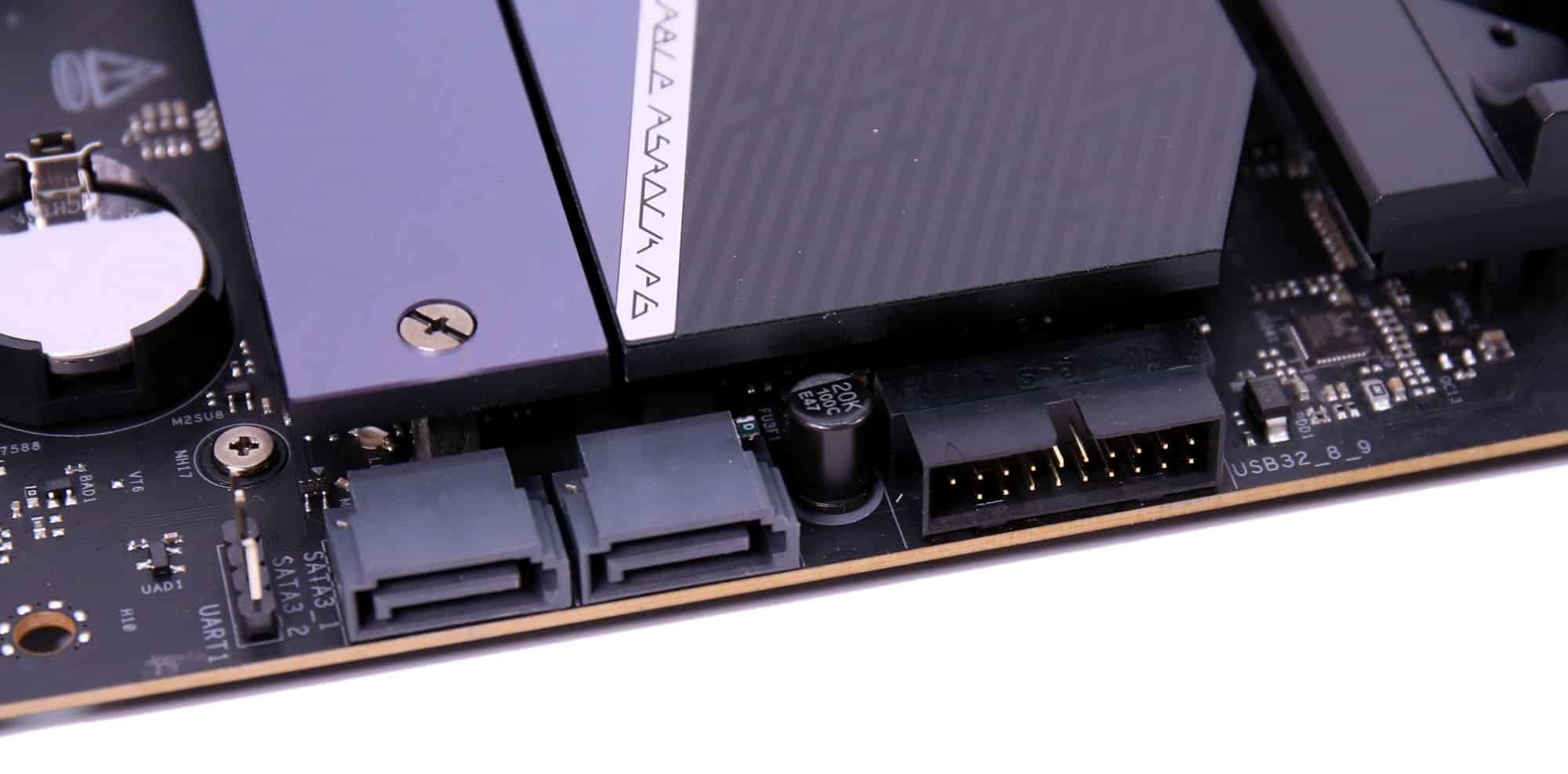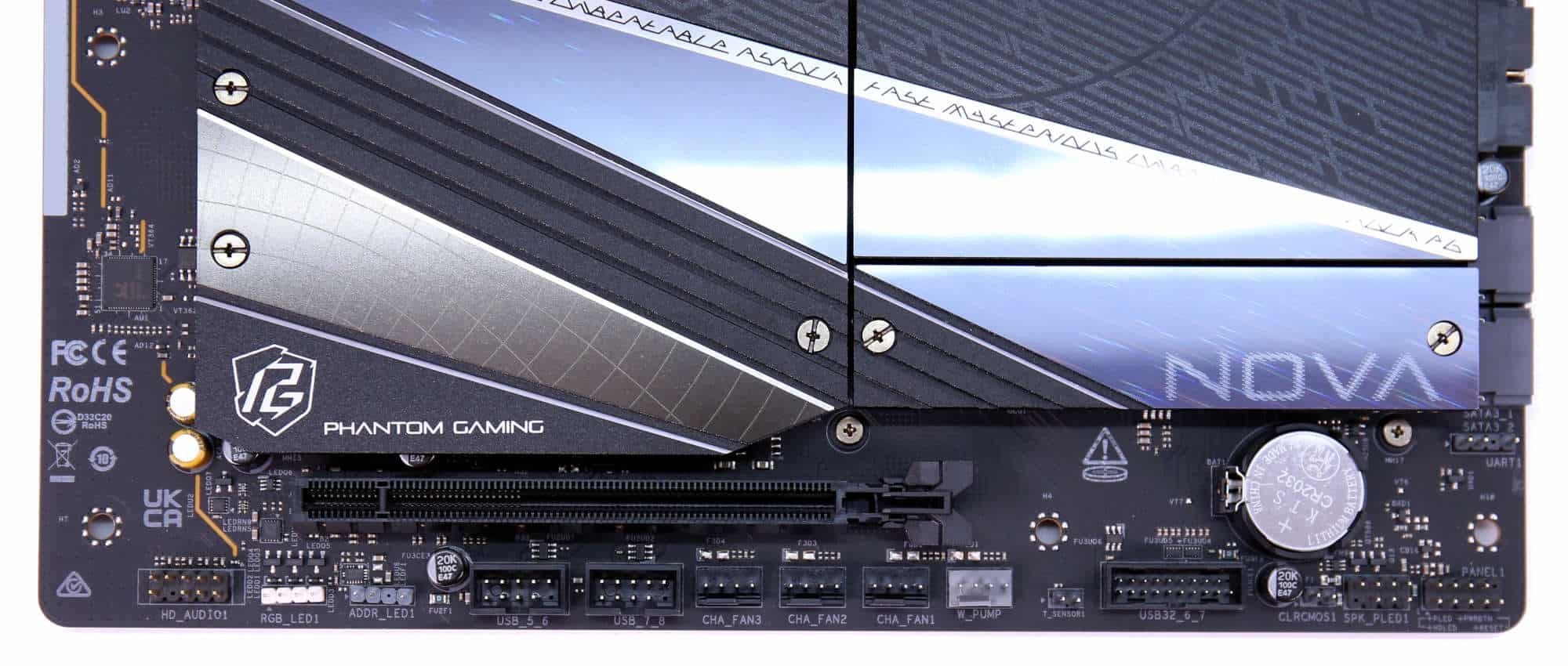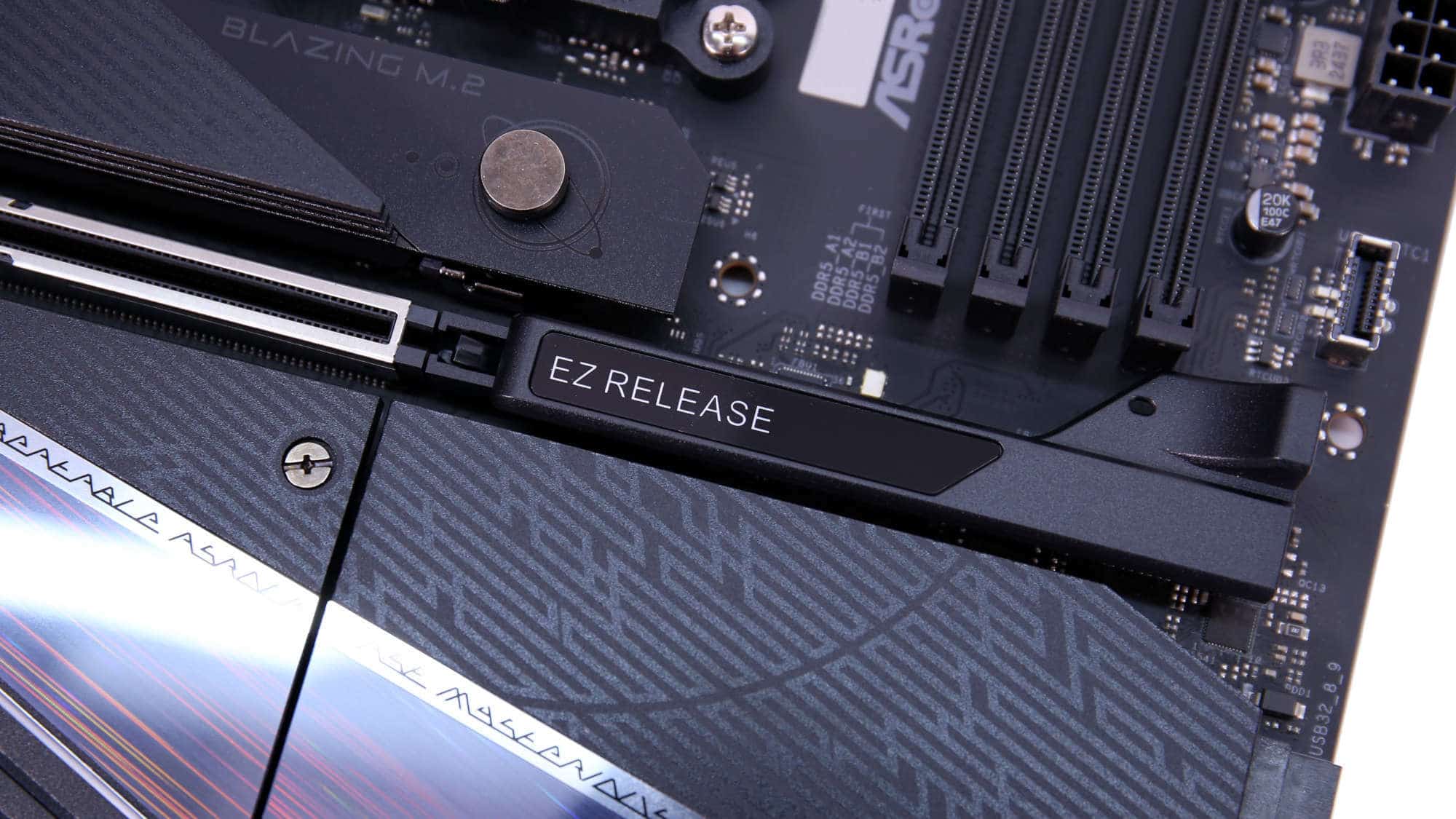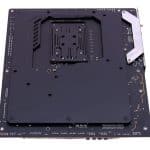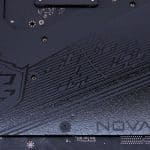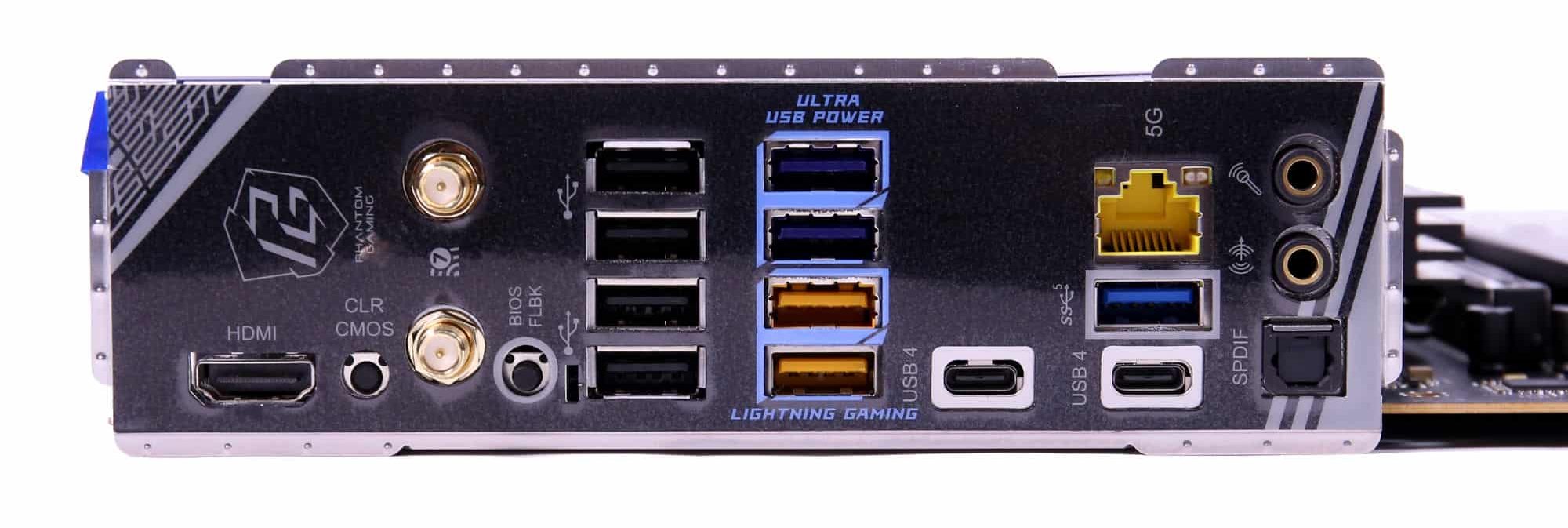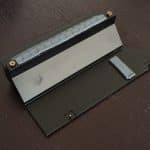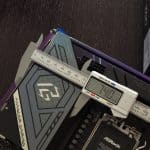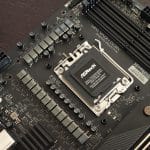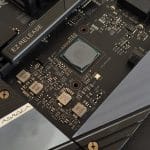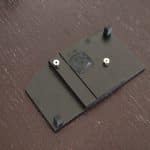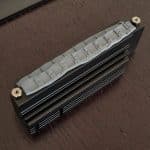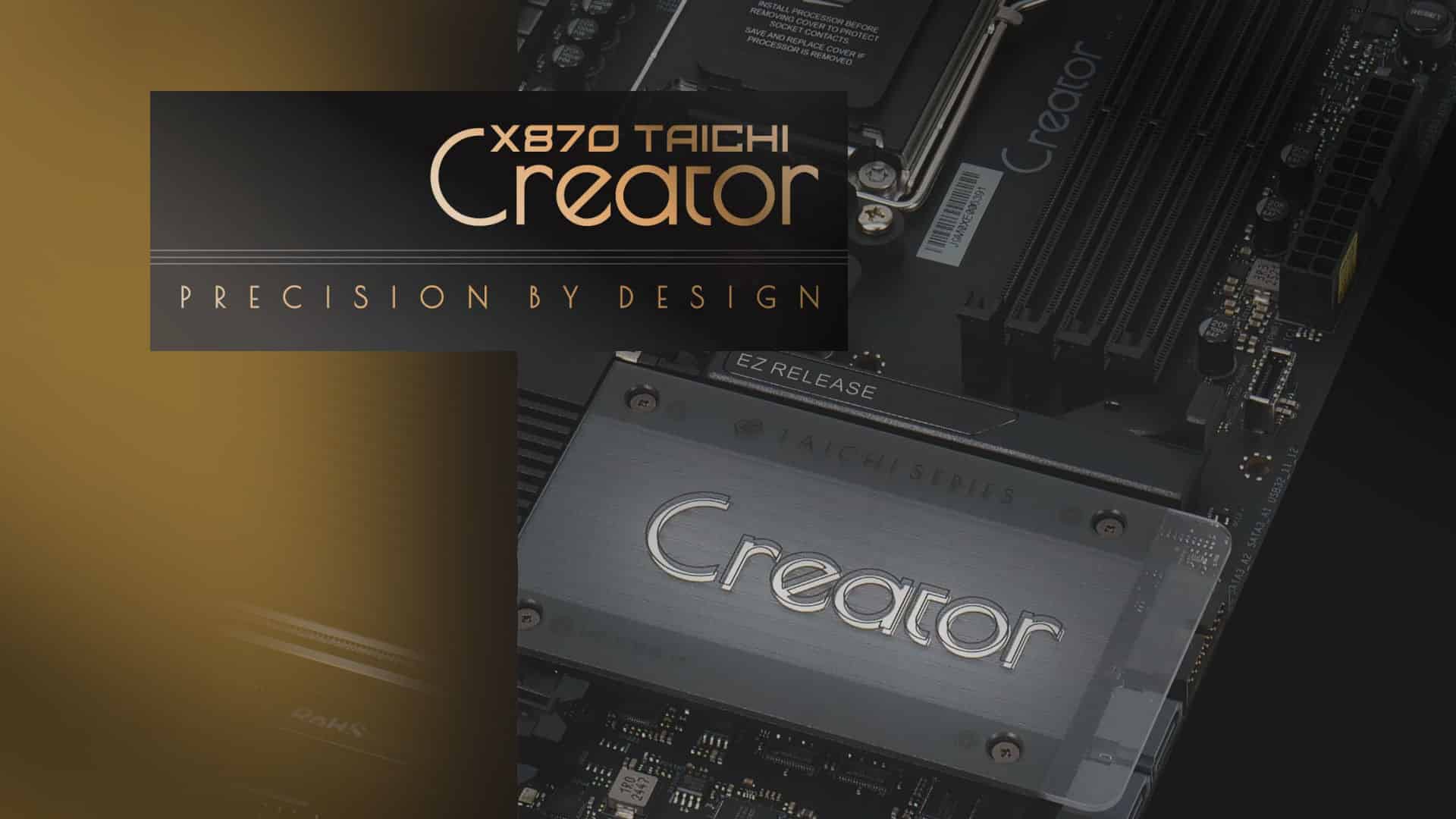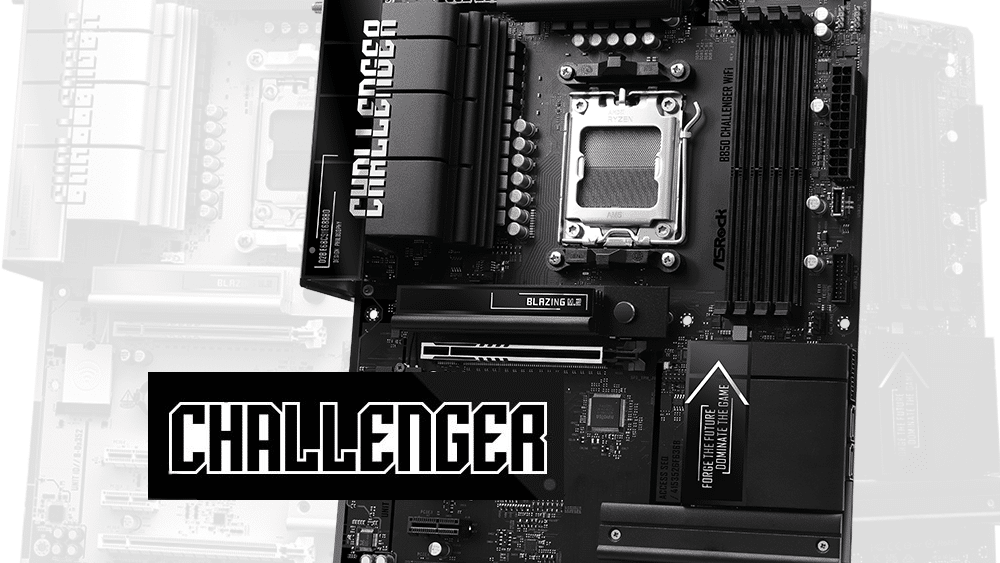X870 Nova Wi-Fi Unboxing & Overview
Opening the box, you’re greeted with plenty of cardboard for protection. Inside, you’ll also find the following bundled accessories:
A quick installation guide, regulatory notices, and a lane-sharing notice
- Two Wi-Fi antennas
- An ASRock keycap for your keyboard
- 2× SATA 3 cables
- A thermistor (optional to use)
- A 5V ARGB (long) splitter cable
The NOVA differs slightly from the Live Mixer, both in appearance and capabilities, so let’s take a closer look.
Starting from the top, the CPU socket is flanked by large heatsinks on two sides, with the RAM slots on the right. The front heatsinks have the exact same design as the Live Mixer. You can also catch a glimpse of the topmost M.2 drive slot. At the top of the board are two 8-pin EPS connectors, the blacked-out VRM cooler, and three PWM headers, one suitable for an AIO. To the right of the RAM slots is a two-digit diagnostic display, which defaults to CPU temperature once booted. There are also onboard power and reset buttons, a premium touch. Two 5V ARGB connectors, the 24-pin ATX connector, and a USB 3.2 Gen 2×2 connector (supporting up to 36 W PD 3.0 charging at 12 V/3 A) round out this section of the board.
In the lower half of the board, the main M.2 slot for your boot drive features a robust heatsink and supports 2280 PCIe Gen 5×4 (128 Gb/s) drives. ASRock’s unique toolless retention mechanism is used here. With 8000-series CPUs, this slot will operate at Gen 4×4 (64 Gb/s) speeds.
In addition to the main slot, there are four more M.2 slots, for a total of five. The other M.2 slots employ a different system, as the heatsinks are screwed in place. Three of them are covered by a single large heatsink that also serves a decorative purpose, while the bottom-right slot has its dedicated heatsink in a similar style.
The topmost of the three stacked slots is the same PCIe Gen 5×4 type as the main slot and includes an extra thermal pad on the underside. Keep in mind: if this slot is occupied, the rear USB4 Type-C ports and the M.2 slot itself will downgrade to x2 mode.
The remaining three slots are chipset-controlled. One operates at PCIe Gen 3×2 (16 Gb/s), and the other two at PCIe Gen 4×4 (64 Gb/s). The middle slot of the three stacked M.2 slots shares lanes with the SATA 3 ports, meaning you can use either the M.2 or SATA ports, but not both simultaneously. The single bottom-right M.2 slot shares lanes with the bottom PCIe slot, so if both are populated, the PCIe slot will drop to x2 speed.
To the right of the M.2 area, you’ll find a side-mounted USB 3.2 Gen 1 header, two SATA ports, and a 5V ARGB connector.
Along the bottom edge of the board are the front button and LED headers, a second USB 3.2 Gen 1 header, the thermistor connector, a pump PWM header, three more fan headers, two USB 2.0 headers, 5V and 12V ARGB headers, and the HD audio connector. Above these is the PCIe 4.0 ×16 slot.
One of the NOVA’s standout features is the main PCIe slot with the EZ Release mechanism. Honestly, we’d like to see this on every ASRock board; it makes removing large GPUs incredibly easy. Anyone who has wrestled with a GPU latch under a massive cooler knows the struggle. On my personal board, I ended up removing the latch entirely to avoid the problem, which I wouldn’t recommend. ASRock isn’t the only manufacturer to offer this feature, but it’s one we greatly appreciate.
The back of the board features a protective plate covering much of its surface, with a Phantom Gaming design. While it’s elegant, it will be hidden once installed. It also functions as a large heatsink, with thermal pads bridging the gap to the back of the VRMs.
The rear I/O is also impressive. While it offers fewer USB ports than the Live Mixer, it’s still more than enough: two USB4 Type-C ports, three USB 3.2 Gen 1 Type-A (blue), two USB 3.2 Gen 2 Type-A (orange), and four USB 2.0 Type-A ports. The USB4 ports support USB PD 3.0 charging up to 5 V/3 A (15 W). A 12V feed powers the blue USB ports, which are then converted to 5V, helping prevent voltage drops under heavy load. The orange ports use separate controllers, intended for your mouse and keyboard, to minimize potential input hiccups.
Other rear I/O features include an HDMI port, two antenna connectors, a clear CMOS button, a BIOS Flashback button, a 5 Gbit Ethernet port, an optical SPDIF output, and gold-plated line-out and microphone jacks. The I/O shield is pre-installed and flexible enough to avoid installation issues.
After testing concluded, we removed the VRM and chipset heatsinks. The VRM cooler design is nearly identical to the Live Mixer’s, but the chipset cooler is exclusive to the NOVA.
